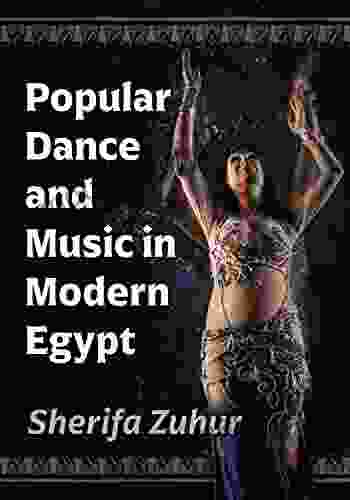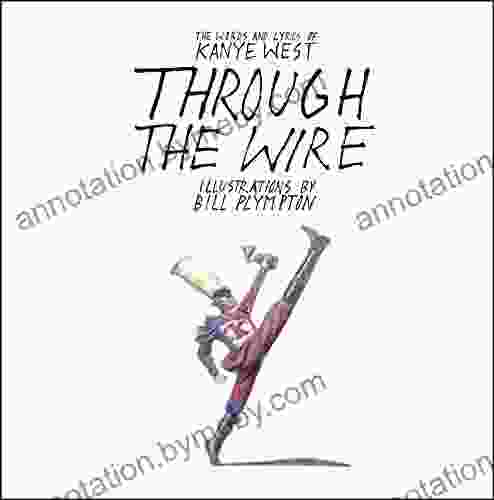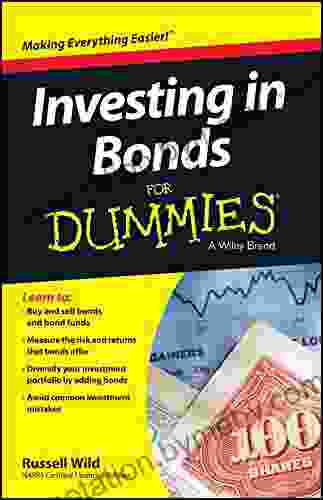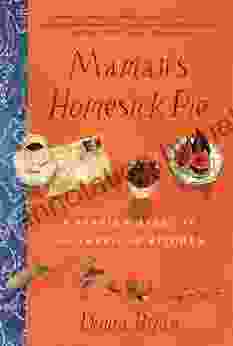Unveiling the Rhythms and Melodies of Modern Egypt: A Comprehensive Exploration of Popular Music and Dance

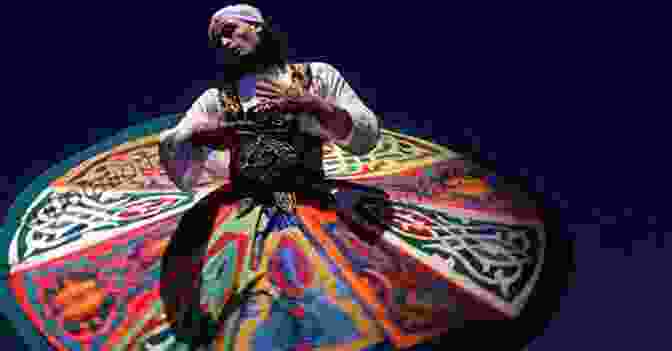
4.6 out of 5
| Language | : | English |
| File size | : | 10751 KB |
| Text-to-Speech | : | Enabled |
| Screen Reader | : | Supported |
| Enhanced typesetting | : | Enabled |
| Print length | : | 504 pages |
Nestled amidst the bustling streets and vibrant cities of modern Egypt, there exists a captivating tapestry of popular music and dance that pulsates with the rhythms and melodies of a rich cultural heritage. From the enchanting strains of Arabic pop to the mesmerizing movements of traditional belly dance, these art forms intertwine to create a captivating and expressive landscape.
The Origins and Influences of Popular Egyptian Music
The roots of Egyptian pop music can be traced back to the early 20th century, influenced by a diverse range of musical traditions. Colonial encounters with European music, the influx of Levantine immigrants, and the rise of Egyptian nationalism all played a role in shaping the unique sound that would come to define the genre.
During the 1950s and 1960s, the emergence of pan-Arabism and the influence of popular Western music led to a surge in the popularity of Egyptian pop. Icons such as Umm Kulthum, Abdel Halim Hafez, and Mohamed Abdel Wahab captivated audiences with their enchanting voices and evocative lyrics that resonated with the aspirations and emotions of the time.
The Evolution of Popular Egyptian Dance
Just as Egyptian pop music has evolved over time, so too has the landscape of popular dance. Traditional folk dances, influenced by the diverse ethnic groups that have settled in Egypt over centuries, provided the foundation for the development of modern dance forms.
In the 19th century, the of ballet and other Western dance styles led to a fusion of traditional and contemporary elements. Belly dance, one of the most iconic forms of Egyptian dance, underwent a transformation, evolving from its origins as a rural folk dance to become a refined and stylized performance art.
The Interplay of Music and Dance in Egyptian Culture
Music and dance are inseparable in Egyptian culture, often intertwined in social gatherings, celebrations, and artistic performances. Weddings, festivals, and other special occasions are marked by vibrant and energetic dance performances, with popular music providing the rhythmic accompaniment. In turn, music draws inspiration from the movements and rhythms of dance, creating a symbiotic relationship.
This interplay is particularly evident in the genre of mahraganat, a contemporary form of Egyptian pop music that originated in the working-class neighborhoods of Cairo. Mahraganat seamlessly blends traditional Egyptian melodies with dancehall and hip-hop influences, resulting in a dynamic and energetic sound that resonates with the younger generation.
The Social and Cultural Impact of Popular Music and Dance
Popular music and dance in Egypt are not merely forms of entertainment but also play vital social and cultural roles. They provide a space for expression, cultural identity, and social commentary.
Egyptian pop music often reflects the social and political issues of the day, with artists using their lyrics to address topics such as love, loss, poverty, and social justice. Dance, too, has long been used as a form of protest and resistance, with performances expressing everything from defiance to celebration.
Preserving and Promoting Egyptian Popular Culture
Recognizing the importance of preserving and promoting popular music and dance in modern Egypt, there have been growing efforts to document and support these art forms. Institutions such as the Cairo Opera House and the National Conservatory of Music have played a crucial role in nurturing talent and providing a platform for performances.
In addition, various organizations and initiatives are dedicated to documenting and preserving traditional folk dances and musical styles. These efforts ensure that the rich and diverse cultural heritage of Egypt continues to thrive for generations to come.
Popular music and dance in modern Egypt are a vibrant and integral part of the country's cultural fabric. They represent a rich tapestry of influences, reflecting the diverse heritage and social dynamics of Egyptian society. Through their captivating rhythms and mesmerizing movements, these art forms provide a unique window into the heart and soul of Egypt.
As we continue to explore and celebrate the richness of Egyptian popular culture, may we embrace its diversity, support its preservation, and recognize its enduring power to inspire, connect, and unite.
References
* El-Shamaa, Y. (2023). Popular Dance and Music in Modern Egypt. Cairo: The American University in Cairo Press. * Shafik, V. (2019). Popular Egyptian Music: A Socio-Political Analysis. London: Routledge. * Shaarawi, S. (2014). Dancing in the Street: A History of Egyptian Belly Dance. New York: Oxford University Press.
4.6 out of 5
| Language | : | English |
| File size | : | 10751 KB |
| Text-to-Speech | : | Enabled |
| Screen Reader | : | Supported |
| Enhanced typesetting | : | Enabled |
| Print length | : | 504 pages |
Do you want to contribute by writing guest posts on this blog?
Please contact us and send us a resume of previous articles that you have written.
 Book
Book Novel
Novel Page
Page Chapter
Chapter Text
Text Story
Story Genre
Genre Reader
Reader Library
Library Paperback
Paperback E-book
E-book Magazine
Magazine Newspaper
Newspaper Paragraph
Paragraph Sentence
Sentence Bookmark
Bookmark Shelf
Shelf Glossary
Glossary Bibliography
Bibliography Foreword
Foreword Preface
Preface Synopsis
Synopsis Annotation
Annotation Footnote
Footnote Manuscript
Manuscript Scroll
Scroll Codex
Codex Tome
Tome Bestseller
Bestseller Classics
Classics Library card
Library card Narrative
Narrative Biography
Biography Autobiography
Autobiography Memoir
Memoir Reference
Reference Encyclopedia
Encyclopedia Diane Miessler
Diane Miessler Dolly Parton
Dolly Parton Deborah Spungen
Deborah Spungen Tyler Ninja Blevins
Tyler Ninja Blevins Zalman Velvel
Zalman Velvel Diane Duane
Diane Duane Julian Hawking
Julian Hawking Susan Vande Griek
Susan Vande Griek Joanne Steer
Joanne Steer Don Johnston
Don Johnston Janet Gurtler
Janet Gurtler Heather Macfadyen
Heather Macfadyen Denys Cazet
Denys Cazet Henry K Miller
Henry K Miller Dina Torkia
Dina Torkia Nicholas Gallo
Nicholas Gallo Sharon Dukett
Sharon Dukett Peta Tait
Peta Tait Steven Selikoff
Steven Selikoff Derek Matravers
Derek Matravers
Light bulbAdvertise smarter! Our strategic ad space ensures maximum exposure. Reserve your spot today!

 Truman CapoteDiscover the Enchanting Beauty of Venice and The Veneto: Your Ultimate Travel...
Truman CapoteDiscover the Enchanting Beauty of Venice and The Veneto: Your Ultimate Travel... Kurt VonnegutFollow ·9.7k
Kurt VonnegutFollow ·9.7k Henry JamesFollow ·9.7k
Henry JamesFollow ·9.7k Steve CarterFollow ·8.9k
Steve CarterFollow ·8.9k John ParkerFollow ·10.3k
John ParkerFollow ·10.3k Desmond FosterFollow ·11.4k
Desmond FosterFollow ·11.4k Oscar WildeFollow ·5.3k
Oscar WildeFollow ·5.3k Aaron BrooksFollow ·8.3k
Aaron BrooksFollow ·8.3k Cameron ReedFollow ·12.2k
Cameron ReedFollow ·12.2k
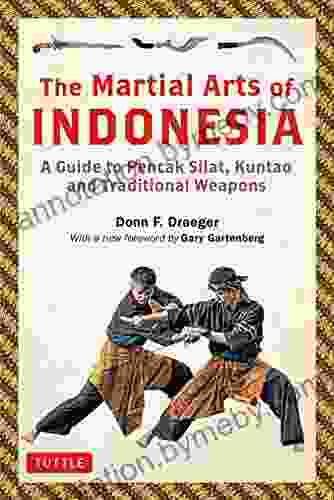
 Cruz Simmons
Cruz SimmonsGuide To Pencak Silat Kuntao And Traditional Weapons:...
Immerse yourself in the captivating world of...

 Dalton Foster
Dalton FosterUnlock Your Financial Freedom: Dive into the ABCs of Real...
Are you ready to embark on a...

 George Orwell
George OrwellThe Advanced Guide to Real Estate Investing: Your...
Are you ready to embark on...
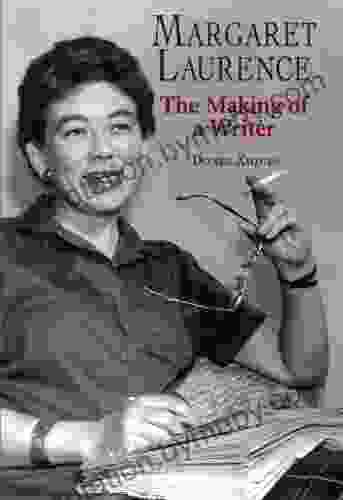
 Will Ward
Will WardMargaret Laurence: The Making of a Writer
Margaret Laurence (1926-1987) was one of...

 Jorge Amado
Jorge AmadoThe ABCs of Property Management: A Comprehensive Guide...
Owning and managing rental...
4.6 out of 5
| Language | : | English |
| File size | : | 10751 KB |
| Text-to-Speech | : | Enabled |
| Screen Reader | : | Supported |
| Enhanced typesetting | : | Enabled |
| Print length | : | 504 pages |


